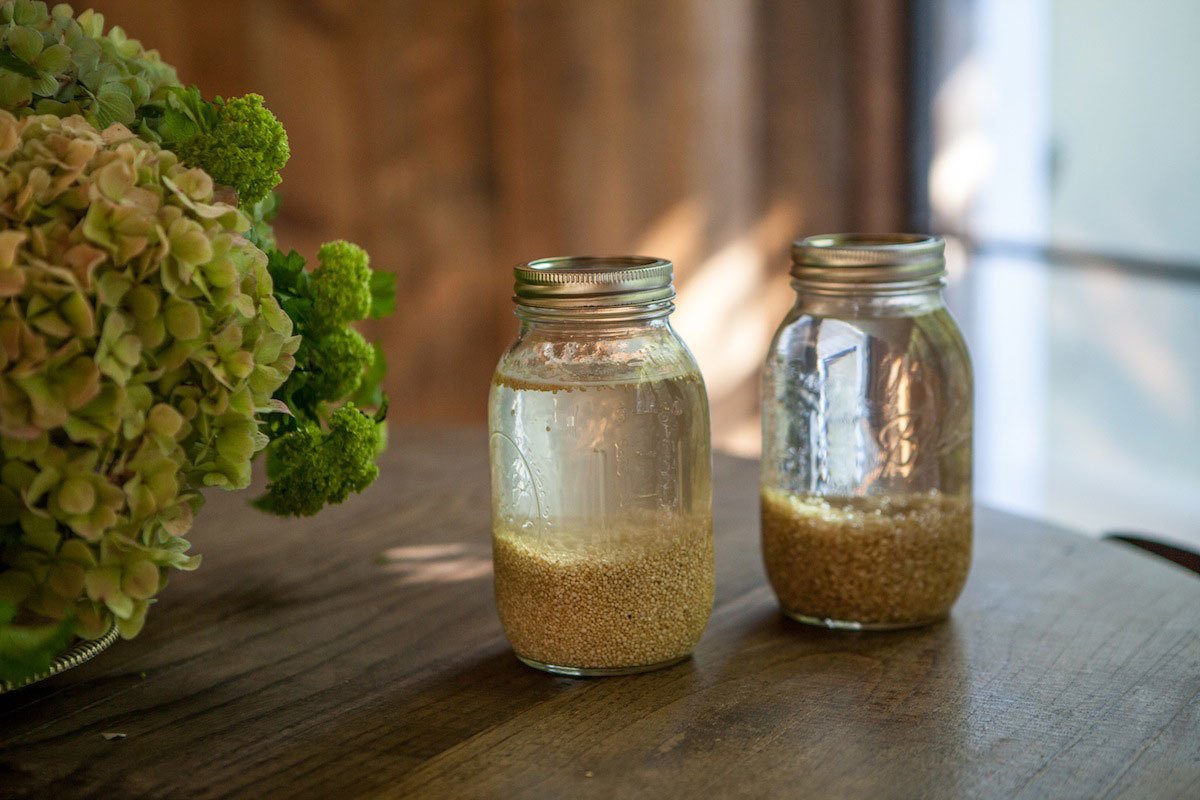Soaking Grains
Translation missing: en.blogs.article.author_on_date_html
Wellness
Soaking Grains
February 13, 2016

Just like the many other tips, tricks, and guidelines for clean cooking and eating that Pamela has given me over the years, her advice regarding soaking grains definitely made an impact. I asked her to share her thoughts on the importance of this process as well as how to easily do it for yourself. XXJKE
PS: I am a big fan of a mostly plant-based diet and more importantly, I emphasize as many whole, unprocessed foods as possible. Whole grains can definitely be part of a healthful diet, but they are much more nutritious and digestible when prepared the way our ancestors did by soaking, fermenting or sprouting them before cooking or eating.
Whole grains contain an anti-nutrient called phytic acid, which binds with certain minerals (e.g. zinc, phosphorous, calcium and iron) and prevents them from being absorbed by the body. Phytic acid is also very hard on the digestive system. Most of the phytic acid is contained in the exterior bran and germ layers of the grain. Ironically, whole grains are much higher in minerals than polished or refined grains, but we won’t receive those benefits unless we neutralize the phytic acid.
Phytic acid is also an enzyme-inhibitor, which keeps the grains/seeds dormant until the conditions for germination are just right. Not only does phytic acid prevent seeds from sprouting, it also helps protect them from predators by blocking digestive enzymes so that the seeds stay untouched as they pass through our digestive tract.
Soaking, fermenting or sprouting your grains before cooking them will neutralize the phytic acid and release the enzyme inhibitors, thus making them much easier to digest and making the nutrients more assimilable. Phytic acid can be neutralized in as little as 7 hours when soaked in water with the addition of a small amount of an acidic medium such as vinegar or lemon juice. Soaking also helps to break down gluten, a hard-to-digest protein found in grains such as wheat, spelt, rye and barley.
Fortunately, grains are very easy to soak. You just need to start the process the night before or the morning of the day you want to eat them. Pour grains into a bowl and cover with warm or room temperature filtered water. Add a tablespoon of something acidic, such as yogurt, raw apple cider vinegar, lemon juice, whey or kefir, for example. Cover and allow to sit at room temperature for at least 7 hours or longer. Change the water after 24 hours if you’re still soaking. Drain and rinse the grains before cooking with fresh water.
Even though 7-8 hours is the minimum recommended for soaking, even a few hours is better than nothing. An extra benefit to soaking grains is a shorter cooking time. The longer you soak them, the less time is needed to cook and also less water. There’s no formula to figuring this out, but usually if you soak 1 cup of brown rice for 8 hours, you can reduce the cooking time from 50 minutes to about 40 and use about 1/3 cup less water. For 1 cup of soaked quinoa, you can cook for about 10 minutes and use 1 ½ cups of water.
If you’ve been eating whole grains, nuts and seeds for years without soaking, don’t stress. A small amount of phytic acid is reduced just by the cooking process alone. But for minimal effort, you can significantly improve the digestibility and nutrition of these important foods.









